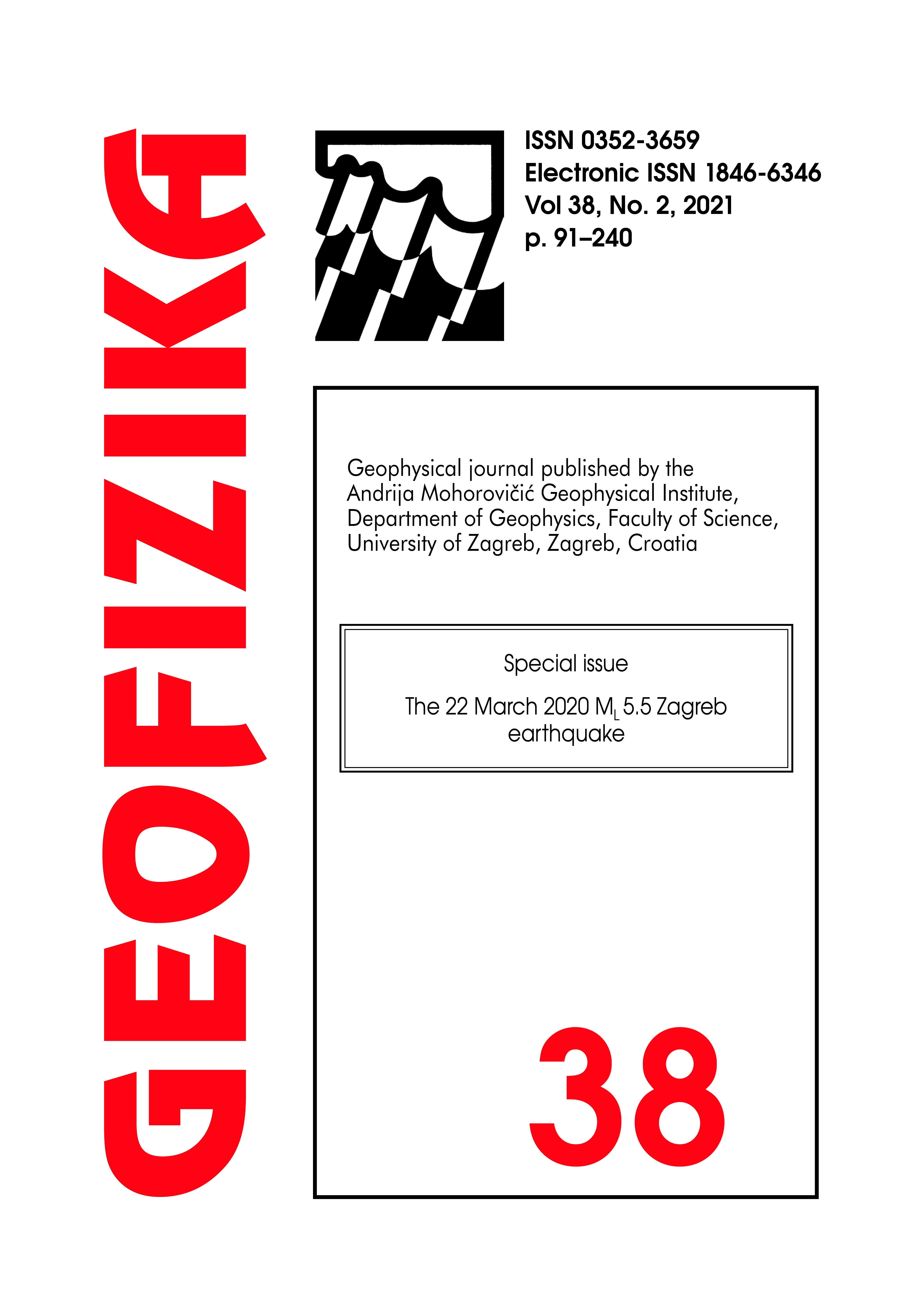Geodetic and seismological analysis of the CROPOS ZAGR station kinematics during the Zagreb 2020 ML 5.5 earthquake
DOI:
https://doi.org/10.15233/gfz.2021.38.10Keywords:
CROPOS, earthquake, GNSS, kinematic motion, PPKAbstract
The CROPOS’s ZAGR stations, one of 33 stations of the Croatian permanent GNSS (Global Navigation Satellite System) network CROPOS (Croatian Positioning System), is located in Zagreb’s city centre. For the first time, motion of one of the CROPOS stations (the ZAGR station) during an earthquake shake (the Zagreb 2020 ML5.5) was analysed by the PPK (Post-Processed Kinematic) method using all available GNSS signals (GPS – Global Positioning System, GLONASS – GLObalnaya NAvigatsionnaya Sputnikovaya Sistem, Galileo, Bei-Dou) and seismologically interpreted. The ZAGR station is situated about 9 km to the south-southeast of the earthquake’s epicentre. The analysis showed that the station’s movements, i.e. combined surface and building motion, during the shake was far above the noise level and enabled the assessment of the station’s kinematics: movements in the range of approx. 13 cm in direction north–south (N–S) and approx. 6 cm in direction east–west (E–W). However, movements in the vertical direction were slightly above the noise level. Even though the ZAGR station kinematic behaviour was pronounced, no permanent displacement was identified. The seismological analysis showed that the ZAGR station recorded the onset of the SV-waves on the N–S component, surface waves on the N–S (predominantly Rayleigh waves) and E–W (mainly Love waves) components. The resolution of 1 s of the results of the PPK method have enabled a thorough analysis of the ZAGR station kinematics and pointed out the usefulness of the method in earthquake observations.
Downloads
Published
Issue
Section
License

This work is licensed under a Creative Commons Attribution-NonCommercial 4.0 International License.

